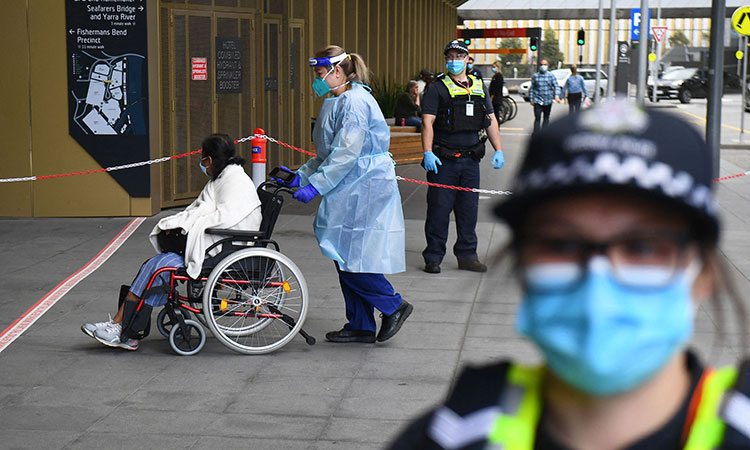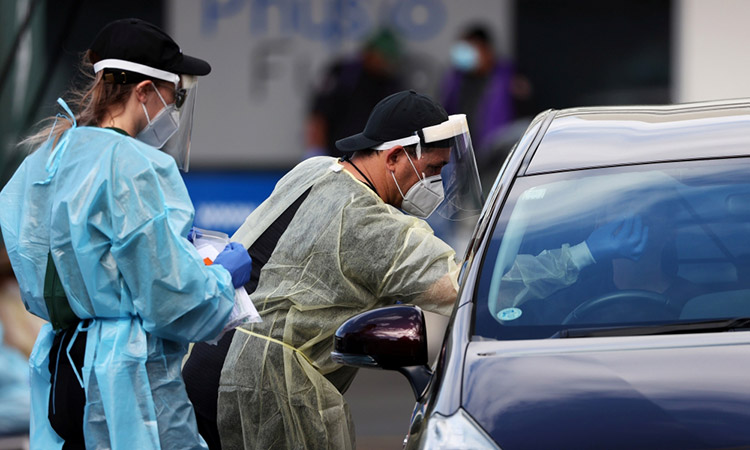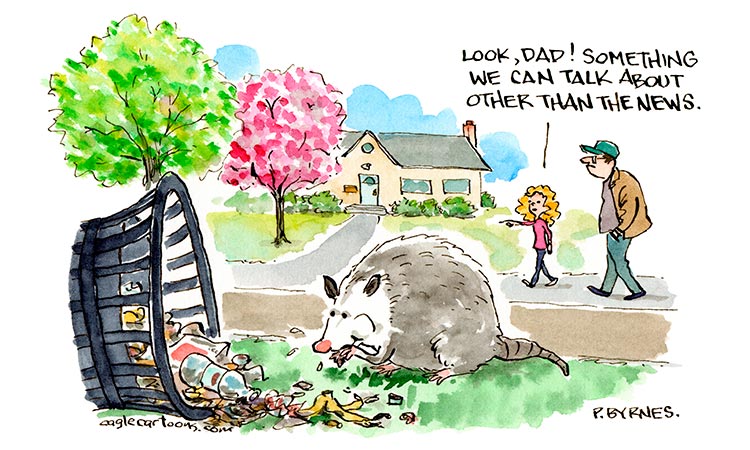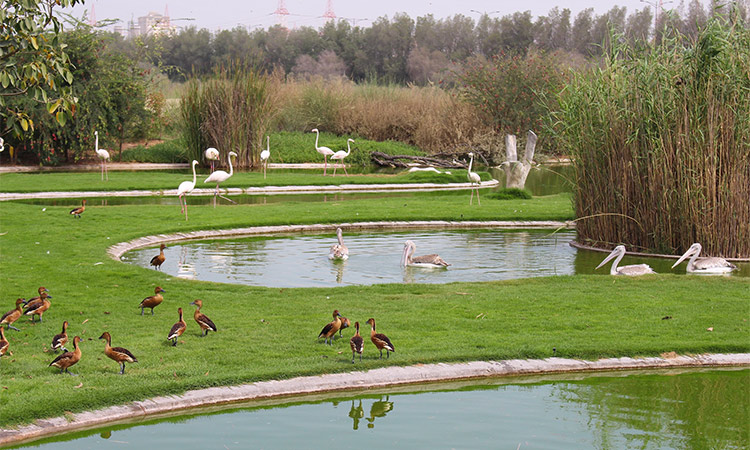Hunger threatens to kill more people than COVID-19
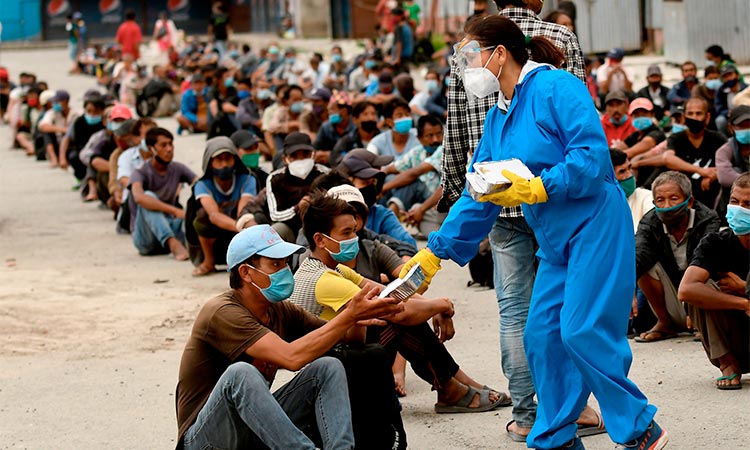
Volunteers distribute food packets to people in need after a week-long restriction due to coronavirus, in Kathmandu. File/ Tribune News Service
The world is hurtling toward an unprecedented hunger crisis. As many as 132 million more people than previously projected could go hungry in 2020, and this year’s gain may be more than triple any increase this century. The pandemic is upending food supply chains, crippling economies and eroding consumer purchasing power. Some projections show that by the end of the year, COVID-19 will cause more people to die each day from hunger than from virus infections.
What makes the situation unmatched: The massive spike is happening at a time of enormous global food surpluses. And it’s happening in every part of the world, with new levels of food insecurity forecast for countries that used to have relative stability.
In Queens, New York, the lines snaking around a food bank are eight hours long as people wait for a box of supplies that might last them a week, while farmers in California are plowing over lettuce and fruit is rotting on trees in Washington. In Uganda, bananas and tomatoes are piling up in open-air markets, and even nearly give-away prices aren’t low enough for out-of-work buyers. Supplies of rice and meat were left floating at ports earlier this year after logistical jams in the Philippines, China and Nigeria. And in South America, Venezuela is teetering on the brink of famine.
“We’ll see the scars of this crisis for generations,” said Mariana Chilton, director of the Center for Hunger-Free Communities at Drexel University. “In 2120, we’ll still be talking about this crisis.”
COVID-19 has exposed some of the world’s deepest inequalities. It’s also a determining force in who gets to eat and who doesn’t, underscoring global social divides as the richest keep enjoying a breakneck pace of wealth accumulation. Millions of people have been thrown out of work and don’t have enough money to feed their families, despite the trillions in government stimulus that’s helped send global equities to all-time highs.
On top of the economic malaise, lockdowns and broken supply chains have also created a serious problem for food distribution. The sudden shift away from restaurant eating, which in places like the US used to account for more than half of dining, means farmers have been dumping milk and smashing eggs, with no easy means to redirect their production to either grocery stores or those in need.
Don Cameron of Terranova Ranch in California took a hit of about $55,000 this year on his cabbage crop. Almost half the loss — $24,000 — came because Cameron decided to donate to local food banks after demand from his usual customers dried up. He had to pay for the labour needed to do the harvesting and truck loading. He even needed to cover the cost of some bins and pallets to get supplies moved. It would’ve been a lot cheaper to just let the crops rot in the field.
“We know other parts of the country need what we have here. But the infrastructure has not been set up, as far as I’m aware, to allow that. There are times when there is food available and it’s because of logistics that it doesn’t find a home,” said Cameron, who still ended up destroying about 50,000 tons of the crop since nearby food banks “can only take so much cabbage.”
Initial United Nations forecasts show that in a worst-case scenario, about a tenth of the world’s population won’t have enough to eat this year. The impact will go beyond just hunger as millions more are also likely to experience other forms of food insecurity, including not being able to afford healthy diets, which can lead to malnutrition and obesity.
The effects will be long lasting. Even in its best-case projections, the UN predicts that hunger will be greater over the next decade than forecast before the pandemic. By 2030, the number of undernourished people could reach as high as 909 million, compared with a pre-COVID scenario of about 841 million.
The current crisis is one of the “rarest of times” with both physical and economic limitations to access food, said Arif Husain, chief economist with the UN’s World Food Programme.
By the end of the year, as many as 12,000 people could die a day from hunger linked to COVID-19, potentially more than those perishing from the virus itself, charity Oxfam International estimates. That’s calculated based on a more than 80% jump for those facing crisis-level hunger.
Projections for increased malnutrition also have a profound human toll. It can weaken the immune system, limit mobility and even impair brain functioning. Children who experience malnutrition early in life can see its impact well into adulthood.
Government programmes, food charities and aid organisations have mobilised across the globe, but the need far outstrips their reach. The UN’s WFP aid group alone needs a record $13 billion for the year to deliver food in 83 countries, and at the start of the second half faced a shortfall of $4.9 billion to meet the goal.
Hunger can spark seismic shifts in the political landscape. Going back to the days of the French Revolution, food insecurity has sent people into the streets demanding better conditions. Surging food prices were part of the economic crisis that helped fuel recent protests in Lebanon and demonstrations over shortages erupted in Chile earlier this year.
Deep-seated inequalities along gender and racial lines also correspond to disproportionate impacts from hunger. In the US, for example, Black Americans are two-and-a half times as likely as their White counterparts to have low or very low access to enough food for an active and healthy life. Globally, women are 10% more likely to be food insecure than men.
“We have to make sure that we’re addressing gender inequality — if the international community is not doing that, we will fail to avoid the worst of the hunger crisis,” said Tonya Rawe, a director at hunger relief and advocacy group Care.
The UN’s Food and Agriculture Organisation began tracking global hunger in the mid-1970s. Current data can’t be compared past 2000 given revisions in methodology, said Carlo Cafiero, team leader for food security statistics. But general trends can be observed, and they show that hunger moved lower over the past several decades until a recent reversal started in 2015, spurred by climate change and conflicts.
The increases in the last few years are nothing like what is forecast now — even the best-case of the UN’s tentative scenarios would see hunger surge in 2020 more than the past five years combined. And when looking at other notable periods of need in the world, such as the Great Depression, the level of food surplus that exists today is without comparison thanks to the advent of modern agriculture, which has seen crop yields explode.
“It’s impossible to look at the situation and not think we have a problem,” said Nate Mook, chief executive officer of food-relief group World Central Kitchen. “This pandemic has really exposed the cracks in the system and where it starts to break down.”


